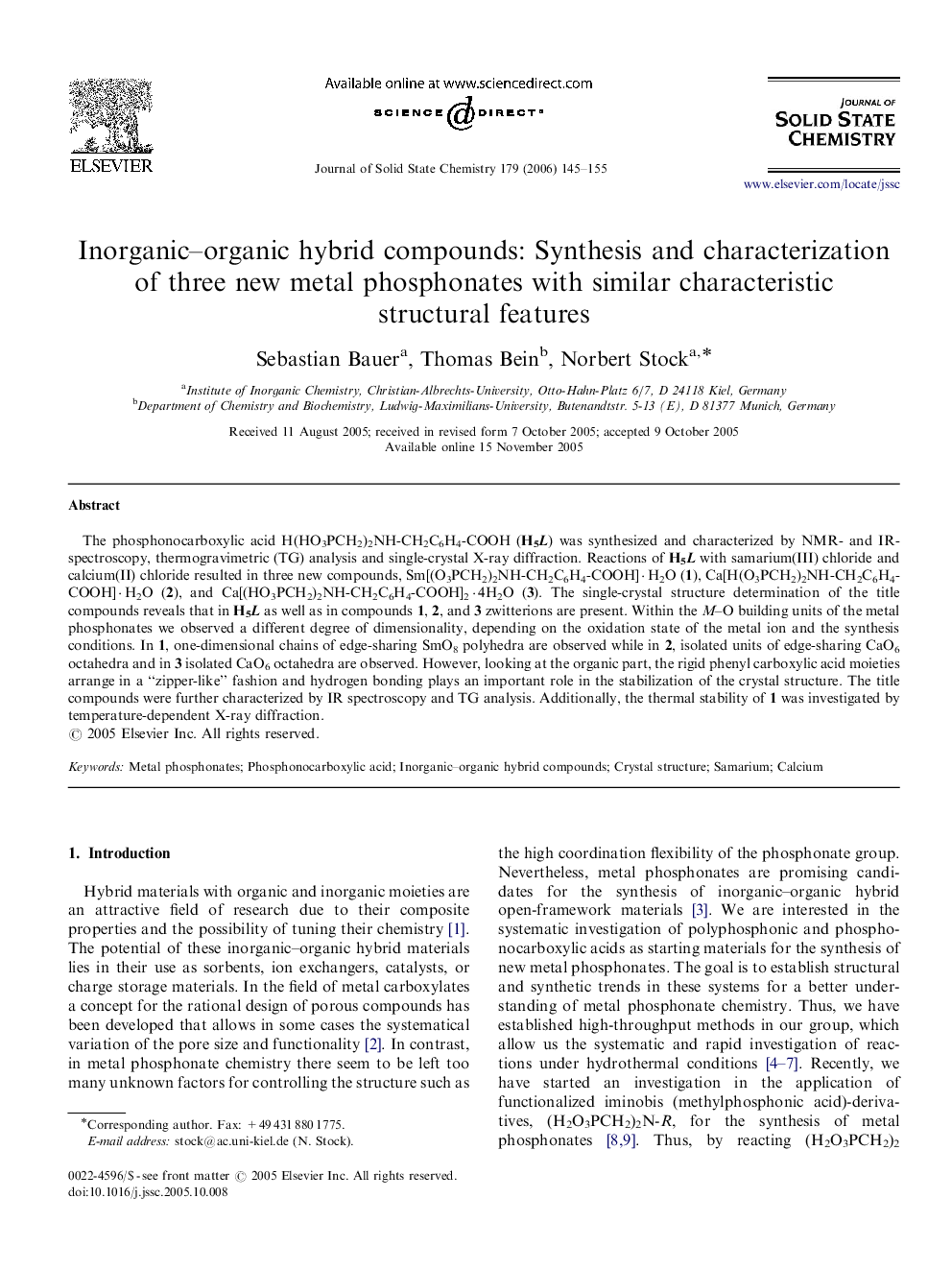| کد مقاله | کد نشریه | سال انتشار | مقاله انگلیسی | نسخه تمام متن |
|---|---|---|---|---|
| 1332116 | 979030 | 2006 | 11 صفحه PDF | دانلود رایگان |

The phosphonocarboxylic acid H(HO3PCH2)2NH-CH2C6H4-COOH (H5L) was synthesized and characterized by NMR- and IR-spectroscopy, thermogravimetric (TG) analysis and single-crystal X-ray diffraction. Reactions of H5L with samarium(III) chloride and calcium(II) chloride resulted in three new compounds, Sm[(O3PCH2)2NH-CH2C6H4-COOH]·H2O (1), Ca[H(O3PCH2)2NH-CH2C6H4-COOH]·H2O (2), and Ca[(HO3PCH2)2NH-CH2C6H4-COOH]2·4H2O (3). The single-crystal structure determination of the title compounds reveals that in H5L as well as in compounds 1, 2, and 3 zwitterions are present. Within the M–O building units of the metal phosphonates we observed a different degree of dimensionality, depending on the oxidation state of the metal ion and the synthesis conditions. In 1, one-dimensional chains of edge-sharing SmO8 polyhedra are observed while in 2, isolated units of edge-sharing CaO6 octahedra and in 3 isolated CaO6 octahedra are observed. However, looking at the organic part, the rigid phenyl carboxylic acid moieties arrange in a “zipper-like” fashion and hydrogen bonding plays an important role in the stabilization of the crystal structure. The title compounds were further characterized by IR spectroscopy and TG analysis. Additionally, the thermal stability of 1 was investigated by temperature-dependent X-ray diffraction.
Hydrothermal reactions of the phosphonocarboxylic acid H(HO3PCH2)2NH-CH2C6H4-COOH with Sm3+ and Ca2+ salts has led to three new inorganic–organic hybrid compounds. All crystal structures contain phosphonate zwitterions and have a layer-like arrangement. The rigid organic groups arrange in a “zipper-like” fashion and hydrogen bonding plays an important role in the stabilization of the crystal structures.Figure optionsDownload as PowerPoint slide
Journal: Journal of Solid State Chemistry - Volume 179, Issue 1, January 2006, Pages 145–155